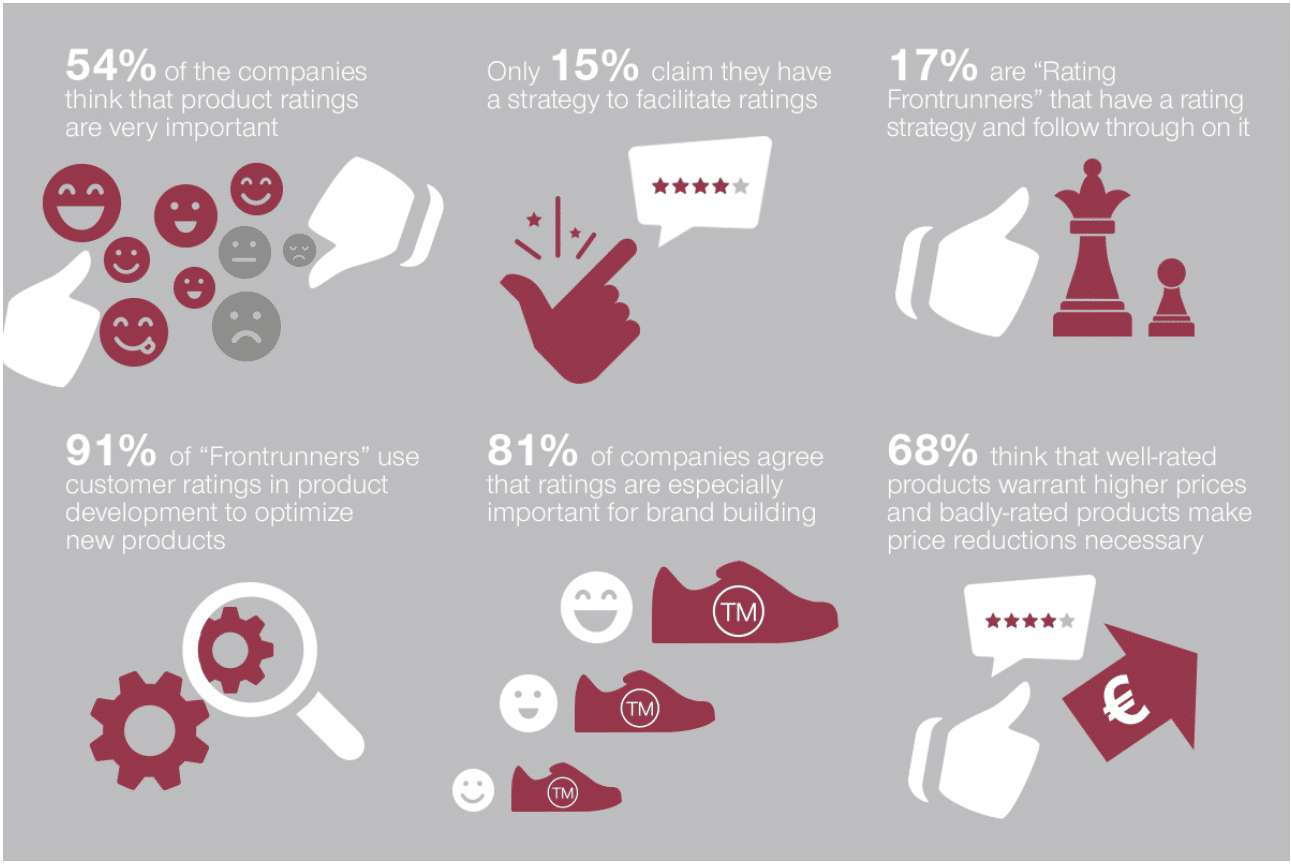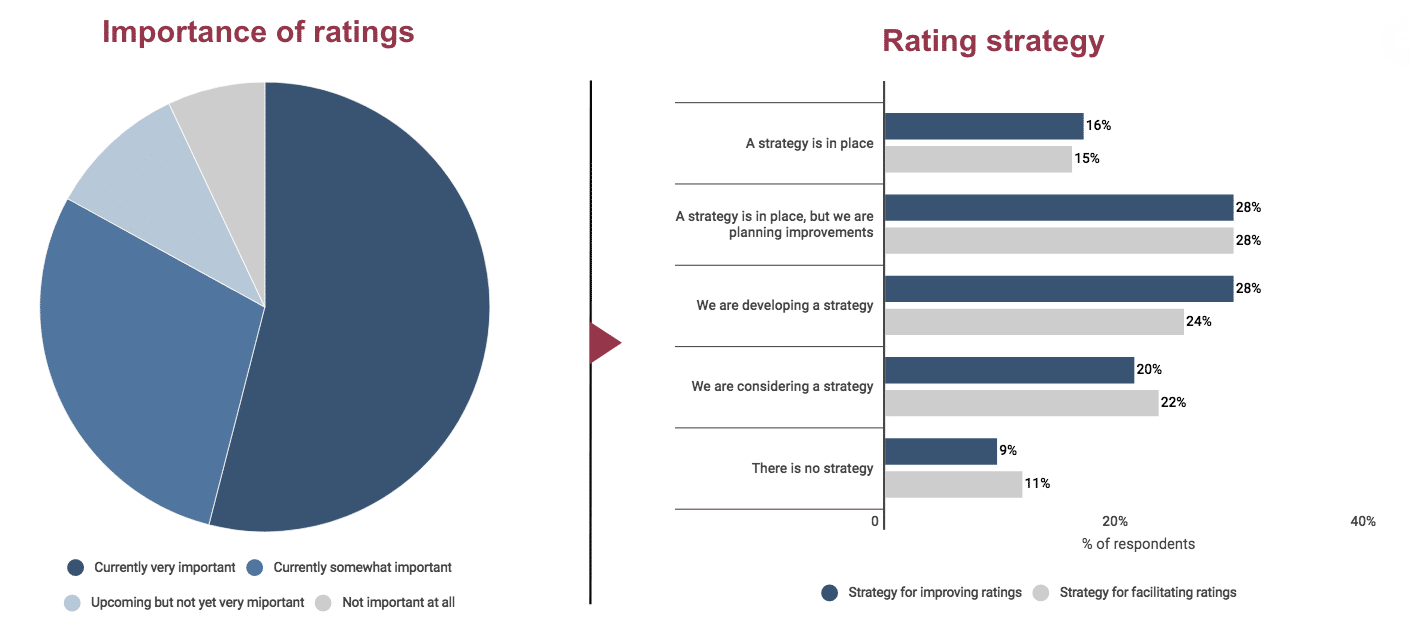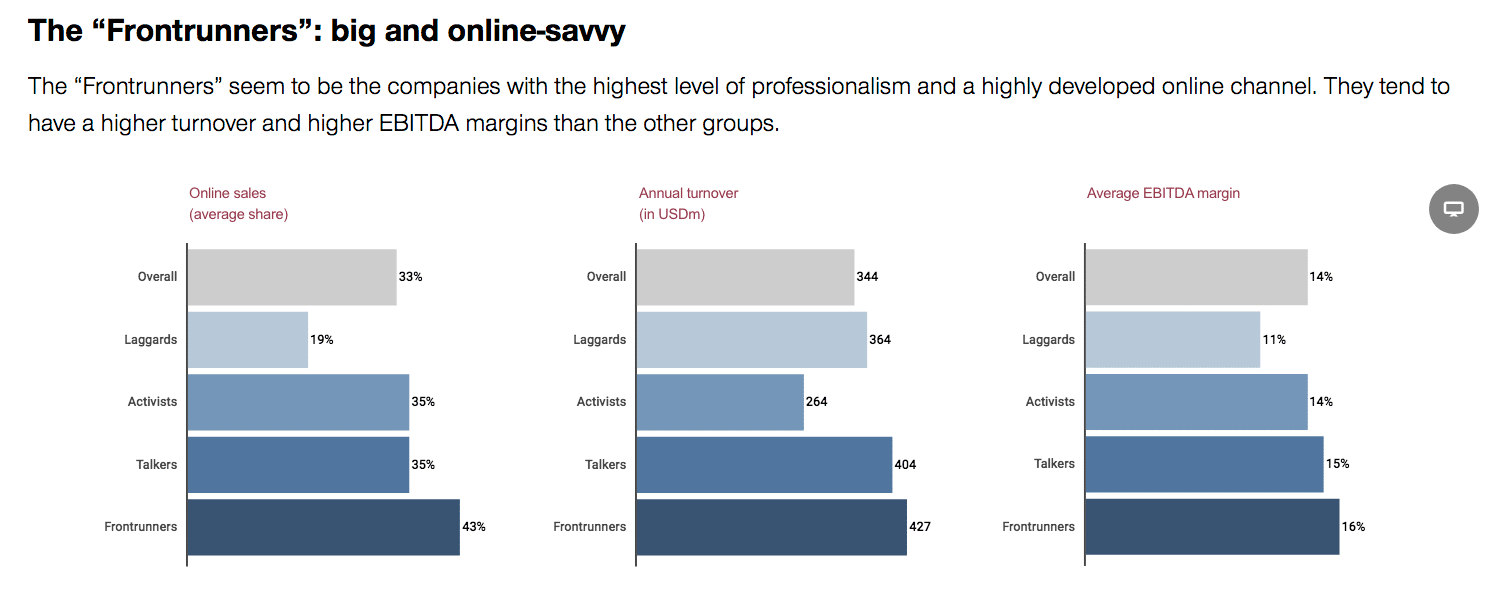Brands and businesses want customers reviewing their products—even if they’re not all positive, reviews are now one of the most reliable third-party methods of promoting brand awareness and authenticity. New research from global strategy and marketing consultancy Simon-Kucher & Partners confirms that globally, 83 percent of companies consider product ratings to be very or somewhat important to their business, and U.S. results closely align with these global findings.
Despite the impact product ratings have on sales volumes, price potential, and brand building, only 15 percent globally (14 percent in U.S.) of the participating companies reported having a strategy to facilitate the rating process, and only 16 percent (15 percent in U.S.) report having a strategy to improve ratings. A further 28 percent (29 percent in U.S.) have a strategy in place but recognize it needs to be improved.
“The consumer part of the Trend Radar Study, conducted earlier this year, showed us clearly that product ratings are a highly important decision criterion for consumers in the purchasing process,” said Dr. Georg Tacke, CEO of Simon-Kucher & Partners, in a news release. “Companies are also starting to realize the importance of product ratings but are still at an early stage in terms of implementing relevant measures. A lot of companies don’t really know where to begin, which reminds me of the uncertainty many companies felt a few years ago about the trend toward digitalization: Everybody was aware there was a need for action, but very few knew which kind.”
Four stages of rating maturity
Looking closer into the survey results, four groups of companies emerged based on the maturity of their dealings with ratings:
- Laggards (17 percent): Companies for which ratings are not yet an important trend
- Activists (47 percent): Companies that consider ratings important and have started taking action but say they don’t have a strategy in place
- Talkers (19 percent): Companies that say they have a ratings strategy but don’t actually follow it
- Frontrunners (17 percent): Companies that “walk the talk”—they have a rating strategy and follow through on it
Interestingly, none of these four groups are linked to specific industries; companies from all sectors can be found in each group. However, frontrunners tend to be larger companies (in terms of annual revenue), have the highest share of online sales (37percent conduct more than 50 percent of their sales through online channels compared to 26 percent overall), and have the highest average EBITDA margin (15.9 percent vs. 13.8 percent overall).
Ratings impact brand building, sales volumes, pricing
Why do companies pay attention to ratings? According to the survey, the vast majority of the participating companies agree or strongly agree about the importance of ratings for brand building (81 percent), lead generation (74 percent), and conversion (73 percent). These companies are particularly right about the importance of brand building, as 33 percent of consumers have already switched brands after reading ratings, as revealed in the consumer portion of the Trend Radar Study.
However, the greatest driver for companies to take ratings seriously is their impact on sales volume and prices. 82 percent of participants report that good ratings increase sales volume and 68 percent say they make higher prices possible. “But most companies have understood they need to be careful. Poor ratings, on the other hand, can contribute to a decrease in sales volumes and/or put pressure on prices,” warns Tacke.
Vital roles of rating strategies: From product development to pricing strategy
According to the survey, many companies are already putting their approaches into action in several important ways, such as:
- Increasing their marketing spend to manage a higher number of ratings (46percentoverall, 65percentof frontrunners)
- Monitoring ratings and using them as KPIs for most or all of their products (68percentoverall, 100percentof frontrunners)
- Replacing poorly rated products with better versions (41percentoverall, 96percentof frontrunners)
- Incorporating customer ratings into product development to optimize their new products for most or all of their product portfolio (65percentoverall, 91percentof frontrunners)
“Almost two-thirds of the companies in our survey—and 94 percent of the frontrunners – say they integrate insights gained from ratings into their pricing strategy, such as by changing prices in accordance with high or low ratings,” added Tacke. “Looking ahead, we expect many more companies to reach this level and follow through on their rating strategies to the benefit of both companies and consumers. Customers will get better value for their money and will be able to influence product offers more directly, while companies with well-rated products will profit financially and strengthen their brands.”
Explore the full company part of the study here.
The Trend Radar is a two-part study conducted by Simon-Kucher & Partners for the first time in 2019 (March/April). Focusing on the topic “Rating Economy 2019,” in part one of the Trend Radar study (the consumer survey), approximately 6,400 consumers in 23 countries worldwide answered questions about their rating behavior, and more than 1,600 companies across all industries were asked in part two (the company survey) about their rating strategy.








